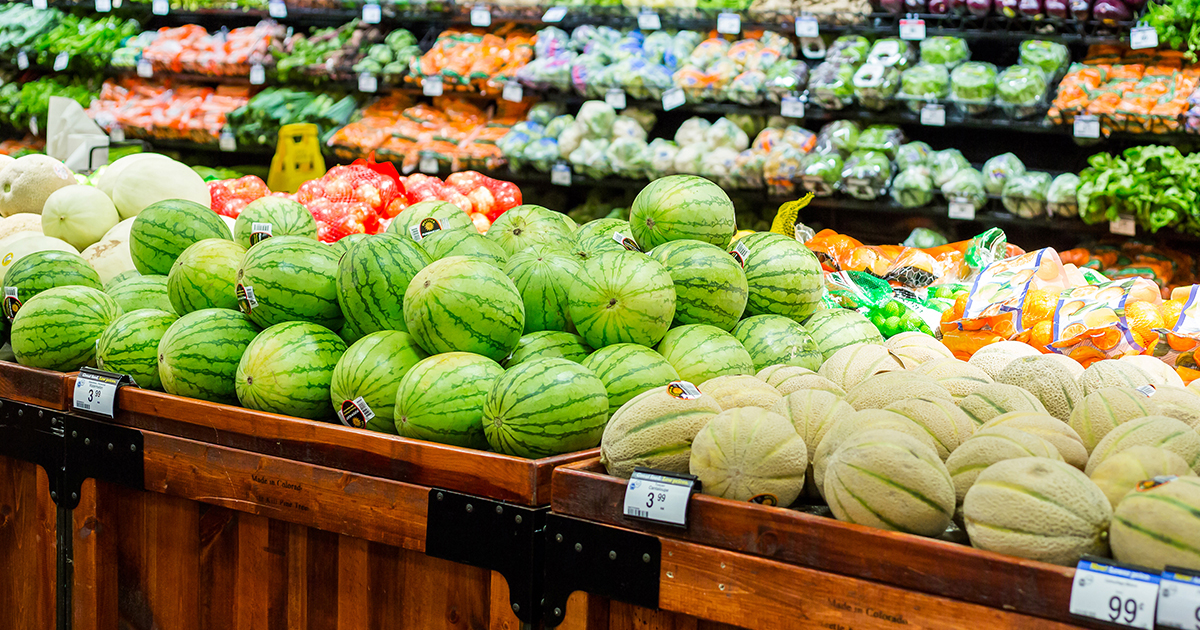How Blockchain Can Improve Food Supply Chains

Blockchain is the most exciting food tech innovation I’ve yet seen. Admittedly, I am not a technologist. I study the food industry, and I see a wide array of possibilities for blockchain technology to improve food supply chains. Emphasis added because we’re still in very early days. As in any broad technological pervasion, blockchain value will grow with compelling use cases, which will take time.
That said, if you are a food professional or looking to enter the industry, you would do well to keep your eye on its evolution.
I’ll leave the technical details to the experts, but I do like the way ripe.io CEO Raja Ramachandran puts it [I paraphrase a bit]: Blockchain is a decentralized way of creating and maintaining trust during transactions among multiple players. It’s a form of database, one that is highly sequential. Ravi Kanniganti of Zebra Technologies adds that blockchain provides “one state of truth distributed across [the network].”
Who is Involved?
Right now, some very large companies—which wield tremendous influence over the operations of the entire industry, given their level of vertical integration (centralization of power)—are testing blockchain. If they choose to adopt it, their partners, suppliers, distributors, and retailers will have no choice but to follow. Here are a few of the commonly touted benefits to the two most upstream stakeholder groups:
Benefits for Farmers
- Secure premium prices with proof of provenance, which blockchain could verify. Such questions as
Who grew this? Where? With what land and soil management practices? could be answered immediately - Improve input and labor costs through precision water, soil, and pest control measures
- Announce bumper crops (additional yields) on the blockchain, which will eventually be populated by a networked landscape of buyers. Instantly, supply and demand can link up. Eaters will get access to more quality produce. Farmers will increase their profits instead of watching their crops rot in the field, which frequently happens when the price of harvesting outweighs the benefits of sale.
- Utilize smart contracts to shrink the time between fulfillment and receipt of payment
Benefits for Manufacturers
- Know instantly any given product’s exact origin, treatment, quality, handling, and age
- Conduct laser-focused food recalls, saving both money and a lot of food. Standard operating procedure is the mass recall, which forces distributors, retailers, and eaters to throw away perfectly safe food because it happened to coexist in time with a small amount of tainted food.
The Walmart Mango Case
Let’s drill down to some specific food blockchain use cases. The one most written about to date is the IBM–Walmart–Mexican mango case.
Frank Yiannas, VP of food safety for Walmart, who was initially quite skeptical of blockchain, agreed to a test of its potential value to the company. First, he had his food safety team trace a packet of mango slices back to the farm through the company’s standard tracking system, which involved phones, faxes, and emails. Six days, 18 hours, and 26 minutes later, the team had done it.
Next, Walmart invited the media to a live demonstration, and used the blockchain system IBM built to track the same mangos in 2.2 seconds (see manufacturer benefit No. 1). Said Yiannas: “This isn’t a lab. This isn’t theory. This is the real world.”
Integrating Internet of Things
A second example is the ripe.io–Ward’s Berry Farm–Sweetgreen case. Ward’s Berry Farm provides tomatoes to Boston-area Sweetgreen locations. Farmer Jim Ward knew what he did in his fields, but how could he prove it (farmer benefit No. 1) and economize (farmer benefit No. 2)?
The ripe.io system (and, in fact, most blockchain systems) operates in conjunction with Internet of Things devices, such as sensors and scanners. Devices in Ward’s field automated the process of tracking water, spray, and fertilizer use, uploading it to the blockchain. This created a verifiable, unalterable, and sequential record of each tomato’s provenance and followed it from Ward’s field to the Sweetgreen location where it was prepped and served. Everyone permissioned on the chain got a copy of every single step—from seed to tending to treatment to harvest to packing, shipping, and, ultimately, service.
Permissions are a whole other topic. But, assume for the moment that in the ripe.io example all three players (farm, blockchain developer, and restaurant) receive a complete copy of each sequential data record pertaining to the tomato. This distributed ledger system makes it impossible for any one player to cook the books. This is the architecture underpinning the trust, transparency, and traceability claims that blockchain developers keep making.
How Will Blockchain Benefit Big Food?
Potential benefits to big food companies and the wider world overlap—a lot. Traceability, transparency, accountability, and authentication create both economic and social good. Millions of pounds of perfectly good and safe food could be saved in blockchain-enabled targeted food recalls by players such as Unilever and Nestlé.
Why has it taken so long to make the food system transparent? Because there is a lot of money in opacity. The food industry runs on cheap labor. Downstream, retailers and eaters may benefit from increased transparency, but much of the burden of implementing and paying for it lives upstream, with farmers and manufacturers. Players who have been benefiting from the opacity will create the most friction to adoption.
Of course, once Walmart, Dole, Tyson, Nestlé, and Unilever (all with IBM Food Trust) decide to get fully onboard with blockchain, we’ll know that industry adoption is coming—whether other participants are willing or not.
A Work in Progress
Again, it’s the early days for the food system’s blockchain revolution. Several major concerns frequently bubble up and must be addressed in this pilot phase:
- Quality of the data: Be it historical or input by hand, participants must trust from the beginning that the data on the blockchain is true. Automated, sensor-driven data is harder to manipulate, adding to its credibility.
- Permissions: The companies that are building food blockchains such as IBM and ripe.io must follow the lead of such clients as Walmart and Sweetgreen, to determine who may be on the chain and, once on, what they may see.
- Standards: Many ventures are designing food blockchain technologies, and they’re not all using the same protocols. Without alignment, blockchains cannot easily onboard new farmers, manufacturers, distributors, retailers, and restaurants without first reworking their data management systems. And, what about one farm on three blockchains—perhaps two for food and one for accounting? What if each of those three operates on a different system? Standardization is crucial to worldwide adoption and blockchain growth.
Getting Everyone on Board
Make no mistake: Industry players across the spectrum are onto this technology. I hosted an in-person interview with ripe.io in March and a webinar with IBM Food Trust in April, which has sparked dozens of inquiries from around the world, in multiple segments of food.
As blockchain is a form of database, its eventual industry power and benefit will be proportional to two factors: the quantity and variety of good, clean, and true data loaded onto the chain, as well as the number of participating parties, which grow the overall network effects.
Stay tuned to see who signs on and how quickly others follow. This will mark the direction and speed for where food blockchain is going.
Posted in Insights





